
The district of Kodagu in present-day Karnataka comprises the area of the former princely state of the same name.

| Part of a series on the |
| Culture of Karnataka |
|---|
 |
The district of Kodagu in present-day Karnataka comprises the area of the former princely state of the same name.


The earliest mention about Coorg can be seen in the works those date back to Sangam period (300 BCE – 300 CE). The Ezhimala dynasty had jurisdiction over two Nadus – The coastal Poozhinadu and the hilly eastern Karkanadu. [2] According to the works of Sangam literature, Poozhinadu consisted much of the coastal belt between Mangalore and Kozhikode. [3] Karkanadu consisted of Wayanad-Gudalur hilly region with parts of Kodagu (Coorg). [4] Kannada inscriptions speak of Kudagu nad (parts of Kodagu, Western Mysore and Kerala) as well. Both the name of the natives and of the region are synonymous (Kodava-Kodavu; Kodaga-Kodagu; Coorgs-Coorg). [5]
The Haleri dynasty was an offshoot of Keladi Nayakas also called Ikkeri Arasu dynasty. Kodagu was independent of Mysore, which was hard pressed by enemies, and a prince of the Ikkeri or Bednur family (perhaps related to the Changalvas) succeeded in bringing the whole country under his sway, his descendants continuing to be Rajas of Kodagu till 1834. The capital was removed in 1681 by Muddu Raja to Madikeri (Mercara).



In the late 1760s, Hyder Ali tried to invade Kodagu thrice and was defeated by the then general of Kodagu Kannanda Doddayya. In 1770 a disputed succession led to the intervention of Hyder Ali of Mysore in favour of Linga Raja, who had fled to him for justice, and whom he placed on the throne benevolently. As a gesture of his gratitude, the Raja ceded certain territories and offered to pay tribute. On Linga Rajas death in 1780 Hyder Ali interned his sons, who were minors, in a fort in Mysore, and installed a governor as their guardian at Mercara with a Mysore garrison. In 1782, however, the Kodava rose in rebellion and drove out the Mysore troops.
Tipu Sultan first negotiated with the Coorgs, worked an amicable settlement and made them feel secure. But then a surprise attack was launched upon the Kodavas following which 500 were killed and over 40,000 Kodavas fled to the woods and concealed themselves in the mountains. The Coorgs were defeated and a large number of them (including women and children) were taken captive. The territories seized were held down by garrisons in four forts. The captured Coorgis were subjected to forcible conversions to Islam. The prisoners were converted into Muslim Ahmadees. The young men were all forcibly circumcised and incorporated into the Ahmadee Corps. They were trained and made to form 8 Assad Ilahi (Asadulai) and Ahmadi Risalas (or regiments).
In 1788, however, Dodda Vira Raja (or Vira Rajendra Wodeyar), with his wife and his brothers Linga Raja and Appaji, succeeded in escaping from his captivity, at Periapatam and, placing himself at the head of a Kodava rebellion, aligned with the British and succeeded in driving the forces of Tipu (who had aligned with the French) out of the country. [6] On the spot where he had first met the British commander, General Abercromby, the Kodagu Raja founded the city of Virarajendrapet (this is now usually called Virajpet). [7]

Dodda Vira Raja, who, in consequence of his mind becoming unhinged, was guilty towards the end of his reign of hideous atrocities, died in 1809 without male heirs, leaving his favourite daughter Devammji as Rani. His brother Linga Raja, however, after acting as regent for his niece, announced in 1811, his own assumption of the government. He died in 1820 and was succeeded by his son Chikka Veera Raja, a youth of twenty. He had members of the families of his predecessors, including Devammaji put to death.The last few Rajas and their family members married members of the Mukkatira and Palanganda Kodava families. At last, in 1833, overnight production of evidence of treasonable designs on the Raja's part led to inquiries on the spot by the British resident at Mysore, as the result of which, and of the Raja's refusal to amend his ways, a British force marched into Kodagu in 1834 after a medium-sized war, when the Raja surrendered. It was a short but bloody campaign that occurred in which a number of British men and officers were killed. Near Somwarpet, where the Coorgs were led by Mathanda Appachu the resistance had been most furious, by the Kodava warriors. But this Coorg campaign came to a quick end when the Rajah had to surrender to the British. [5] [8] [9]
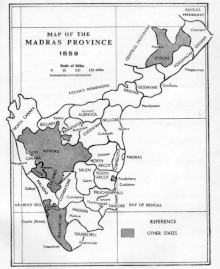

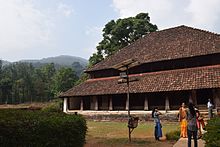
On 11 April 1834, the raja was deposed by Colonel Fraser, the political agent with the force, and on 7 May the state was formally annexed to the East India Company's territory, as Coorg. In 1852 the Raja, who had been deported to Vellore, obtained leave to visit England with his favourite daughter Gauramma, to whom he wished to give a European education. On 30 June she was baptised, Queen Victoria being one of her godmothers; she afterwards married a British officer who, after her death in 1864, mysteriously disappeared together with their child. Vira Raja himself died in 1863 and was buried in Kensal Green Cemetery. [10]
The Amara Sulya Freedom Movement of 1837 began when the British bifurcated Amara Sulya from Kodagu Samsthaana and demanded agricultural tax to be paid in the form of money by Sulya residents. The British had also deposed the Raja. The freedom movement to reinstate tradition over English Hegemony was led Sri Kedambadi Ramè Gowda, Subedar Sri Guddemane Appaiah Gowda, Koojugodu Mallayya Gowda and Chetty Kudiya among others. [11] [ contradictory ]
After the rebellion the British presented Coorg chiefs who had remained loyal with gifts including horses, while a special Coorg Medal was awarded to chiefs, local leaders and those Kodavas who had supported the British during the conflict. [12] [ contradictory ]
Coorg (Kodagu) was the smallest province in India, with an area of only 1,582 square miles (4,100 km2). As a province of British India, it was administered by a commissioner, subordinate to the Governor-General of India through the resident of Mysore, who was also officially chief commissioner of Coorg. Later freedom fighters from Kodagu supported the National Independence Movement. One of them, Pandyanda Belliappa was known as Kodagu's Gandhi. [13] [5]

After India's independence in 1947, Coorg became a province, and in 1950 a state by name of Coorg State of Republic of India. In 1952 elections to the Coorg Legislative Assembly were held. In 1956, when India's state boundaries were reorganized along linguistic lines, it became a district of the then Mysore state.
The Chief commissioners of Coorg were;
The Chief minister 1952-1956 was C.M. Poonacha. [14]
Mysore state later became the modern state of Karnataka, and the formal name of the district returned to the original, Kodagu. [15]
Many Coorgs joined the Indian army, the Indian hockey team and other sports. Prominent among them were Field Marshal K. M.Cariappa, General K.S.Thimayya, Lt. Gen. Iyappa (BEL chairman Aiyappa), Sqdn Leader Ajjamada B. Devaiah (war martyr), hockey captain M P Ganesh, tennis player Rohan Bopanna, CAG C. G. Somiah, etc., Kodagu district#Notable people

Kodagu district is an administrative district in the Karnataka state of India. Before 1956, it was an administratively separate Coorg State, at which point it was merged into an enlarged Mysore State.
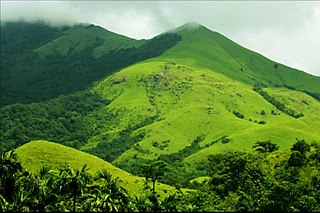
Madikeri is a hill station town in Madikeri taluk and headquarters of Kodagu district in Karnataka, India. It's original name was Middurajanakeri which means "the capital of Maharaja Mudduraja".
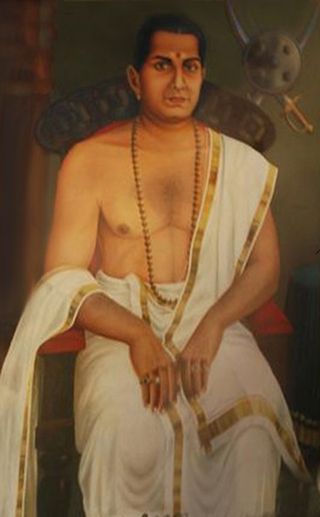
Kerala Varma Pazhassi Raja, also known as Cotiote Rajah and Pychy Rajah, was the de facto head of the Kottayam Kingdom in the Malabar region of Kerala between 1774 and 1805. His struggles with the British East India Company is known as the Cotiote War. Pazhassi's rebellion against the British is often touted as one of the earliest acts of freedom fight in India. He earned the epithet "Kerala Simham" on account of his martial exploits.

The Kodava people or Kodavas or Codavas are an ethno-linguistic group from the region of Kodagu in the southern Indian state of Karnataka, who natively speak the Kodava language. They are traditionally land-owning agriculturists and patrilineal, with martial customs. Kodavas worship ancestors and weapons. They used to worship swords, bows, arrows and later guns. Hence, Kodavas are the only ones in India permitted to carry firearms without a license.
Nelliyalam is a panchayat town in The Nilgiris district in the Indian state of Tamil Nadu. As of 2011, the town had a population of 44,590.

Devala is a town in the Nilgiris district of Tamil Nadu. It is situated at about 17 km from Gudalur on the Gudalur–Pandalur road. It is close to the Kerala-Tamil Nadu border, with Nilambur on the Kerala side.
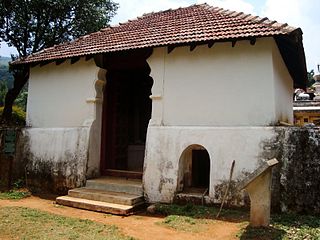
Nalknad Palace or Nalkunadu, called Naalnaad Aramane in the local Kodava language, is a palace located in the Kodagu district of the Indian state of Karnataka. It is located near a village named Yavakapadi and was built between the years 1792 and 1794 AD. This palace was the last refuge of the last of the Haleri kings of Kodagu, Chikka Veerarajendra before he was deposed by the British. The Kannada film Shanti, which has only a single actor, was shot in the surroundings of the palace.
Thrikkaipatta is a village in Wayanad district in the state of Kerala, India Wayanad District is a district in the north-east of Kerala state, India with headquarters at the town of Kalpetta.
Gudalur taluk is a taluk of Nilgiris district of the Indian state of Tamil Nadu. The headquarters of the taluk is the town of Gudalur.
The captivity of Kodavas (Coorgis) at Seringapatam was the period of capture, deportation, and imprisonment of Kodava Takk speaking Coorgis who rebelled against Tippu Sultan, the de facto ruler of the Kingdom of Mysore, they were caught during a number of attempts to suppress their rebellion in the 1780s.

Coorg State was a Part-C state in India which existed from 1950 to 1956. When the Constitution of India came into force on 26 January 1950, most of the existing provinces were reconstituted into states. Thus, Coorg Province became Coorg State. Coorg State was ruled by a Chief Commissioner with Mercara as its capital. The head of the government was the Chief Minister. Coorg State was abolished on 1 November 1956 as per the States Reorganisation Act, 1956 and its territory were merged with Mysore State. Presently, Coorg forms a district of Karnataka state.

Coorg Province was a province of British India from 1834 to 1947 and the Dominion of India from 1947 to 1950. Mercara was the capital of the province. It was administered by a Commissioner and later, Chief Commissioner appointed by the Government of India. The Chief Commissioner, was usually based in Bangalore. From 1834 to 1881, the Chief Commissioner, was also the Commissioner of Mysore. From 1881 to 1940, the Chief Commissioner was usually the British Resident to the princely state of Mysore.
Tulu Gowda and Arebhashe Gowda (Gauda) are primarily found in South Canara District, Kodagu District, Indian state of Karnataka and Bandadka village of Kasaragod. They are a subsect of the Vokkaliga community but are culturally and linguistically different. They speak Tulu and Arebhashe.

The Kingdom of Coorg was an independent kingdom that existed in India from the 16th century until 1834. It was ruled by a branch of the Ikkeri Nayaka. From 1780 to 1788, the kingdom was occupied by neighbouring Mysore but the Rajah of Coorg was restored by the British and became a protectorate of the British East India Company on 26 October 1790. In 1834, the then Raja of Coorg rebelled against British authority, sparking the Coorg War. The brief conflict led to the British to annex the kingdom in the same year, who transformed the region into a province of British India.

The St. Mark's Church, is located within the Mercara Fort, Coorg, India and was raised in 1859, by the officers and men of the East India Company. The church building was funded by the Government of Madras, and placed under the Church of England in India, Diocese of Madras. The Church was closed after Indian independence, and taken over by the Government of Karnataka in 1971. The building now houses the Madikeri Fort Museum, managed by the Karnataka State Archaeological Department.
Wayanad district, which is home to Edakkal Caves, has human settlement from prehistoric era. Wayanad is the sole Plateau in Kerala. The tribal dialects of Wayanad like the Ravula language and the Paniya language are closely related to Malayalam.

Dodda Vira Rajendra was the ruler of the Kingdom of Coorg from 1780 to 1809. He is considered a hero of Coorg history for having freed the kingdom from the occupation of Tipu Sultan, the king of Mysore. He later aided the British in their fight against Tipu Sultan.

The Amara Sullia Rebellion was an armed uprising against the British government organized by the people of Arebhashe, and Tulunadu that took place in 1837, twenty years before the Sepoy Mutiny of 1857.

Guddemane Appaiah Gowda was an Indian freedom fighter and revolutionary, he instated a peasant army from Kodagu and became its commander in-chief to lead the Amara Sullia Rebellion in 1837. They were successful in hoisting the native flag after lowering the Union Jack, which is known to be the first-ever freedom movement against the East India Company. They established a civil government in Mangalore for 13 days under his leadership.
Kannanda Doddayya was a Kodava commander who defeated Hyder Ali's forces thrice. He was also known as Kannana Doddayya and Doddanna.